Affiliate disclosure: This post may contain affiliate links. Please see our Privacy Policy.
Attached greenhouses are more than just a place to grow plants—they can double as passive solar heaters, extra living space, and year-round garden extensions. On our off-grid homestead, the attached greenhouse was a major selling point, and it’s become one of the most valuable parts of our daily life. From cozy winter mornings in a sun-warmed space to housing lemon trees and seedlings, it’s been both practical and unexpectedly transformative.

I’m completely in love with our attached greenhouse. When we found our off-grid homestead, I’ll admit—the greenhouse was one of the main selling points. I was dreaming of a cozy space to start all our seedlings and jump-start the garden season. What I didn’t expect was how essential it would become to our day-to-day life and the overall function of our homestead.
If you’re considering building an attached greenhouse, here are the real-life pros and cons we’ve experienced firsthand after several years of daily use.
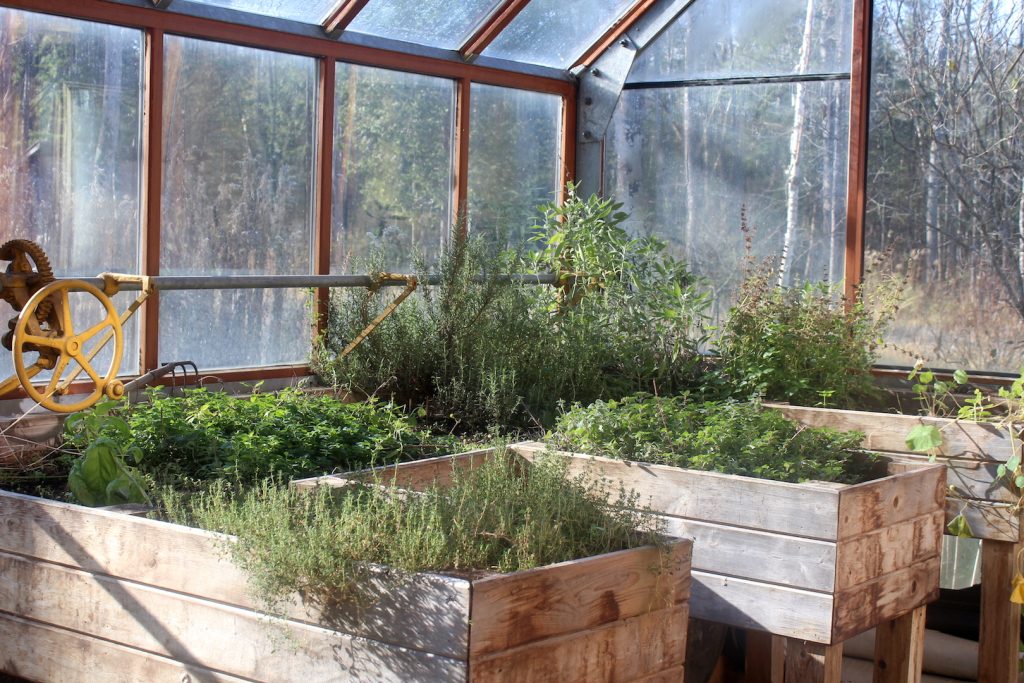
Benefits of an Attached Greenhouse
The biggest benefit of our attached greenhouse actually has nothing to do with gardening. It’s about warmth. Even on the coldest Vermont days, when the sun is shining, the greenhouse heats up like a sauna. We have a connecting door between the greenhouse and our kitchen, plus three full-height windows that can be opened to let that heat pour into the house.
There have been winters where we’ve gone weeks without running any supplemental heat—yes, even in January in Vermont, with no furnace. When it’s -20°F outside, stepping into a 90-degree greenhouse to sip tea in a tank top feels like a luxury resort… except it’s your own home.
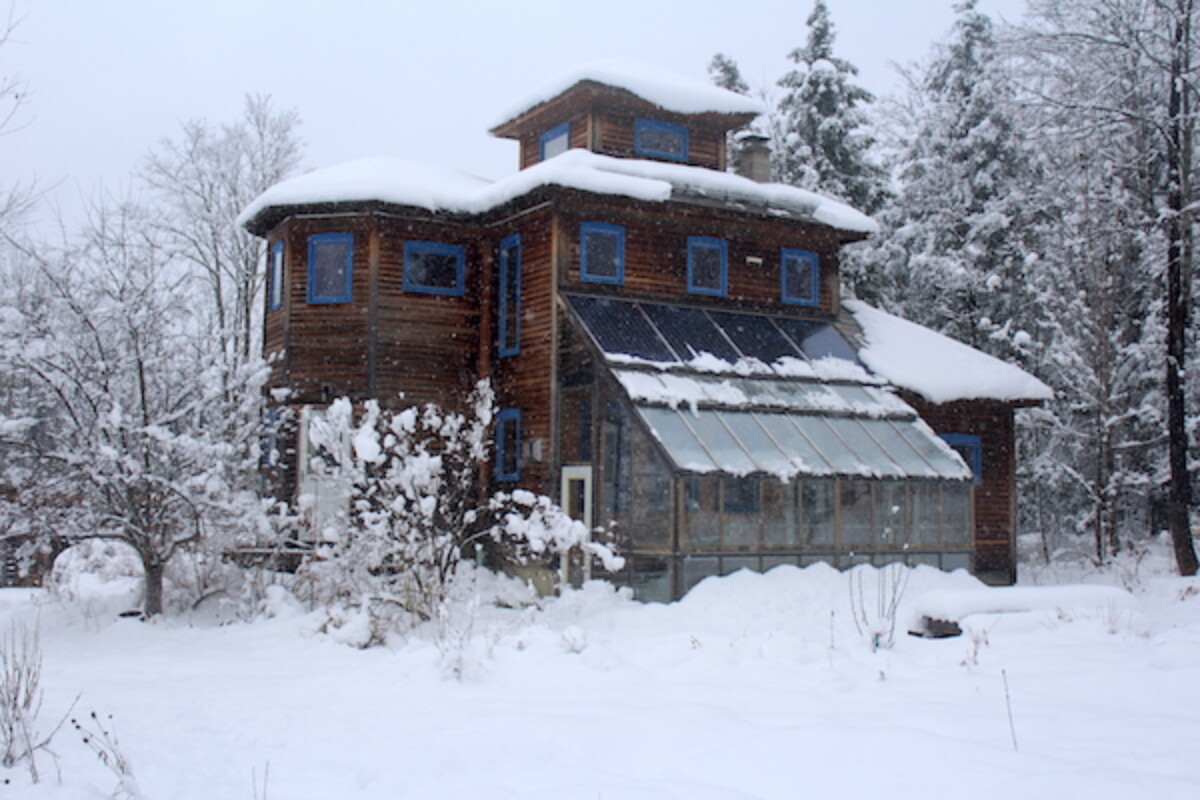
A big part of maintaining our off grid systems in winter is keeping those solar panels clear, but also keeping the glass clear so we get passive solar heating.
Our greenhouse is more than just a plant space—it functions as an extra room, giving us year-round passive solar heat and bonus living area in our one-room cabin-style home.
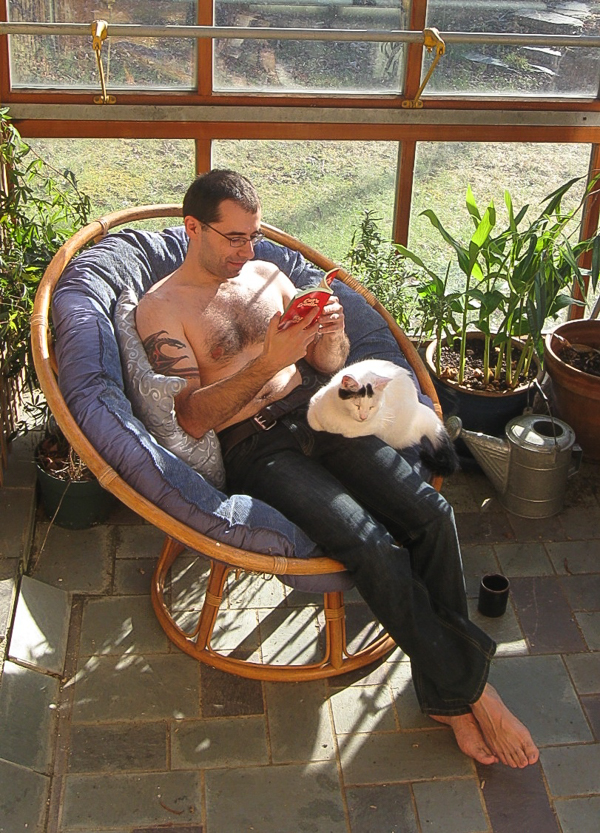
Starting Seeds in an Attached Greenhouse
At first, I thought this space would be perfect for seed starting—but it’s not quite that simple. Many seeds need to be started early, some as early as February to get a proper head start in our short northern growing season. That’s still deep winter, and while the greenhouse warms during the day, it can’t maintain the consistent temperatures required for good germination overnight.
Plus, when the sun does come out, temperatures inside can spike to over 100°F—even if it’s below zero outside. Those temperature swings are hard on seedlings, and if we’re not careful with venting, they can easily get cooked.
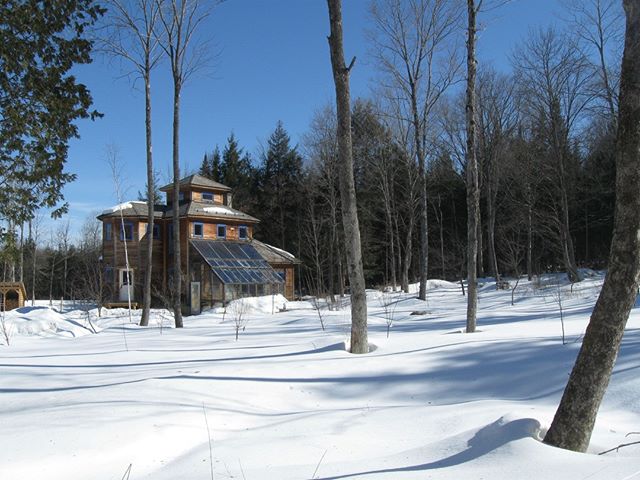
There’s also the challenge of limited light in winter. Even without snow cover, days are short, and heavy snowfalls often cover the glass and block sunlight altogether.
Then there are the pests. Mild winter temps inside the greenhouse mean aphids and other insects wake up early and target fragile young seedlings. After several frustrating seasons, we shifted our strategy. We now start seeds indoors under lights with our homemade seed starting rack and treat the greenhouse more like a giant cold frame for hardening off and growing out seedlings once the sun is stronger.
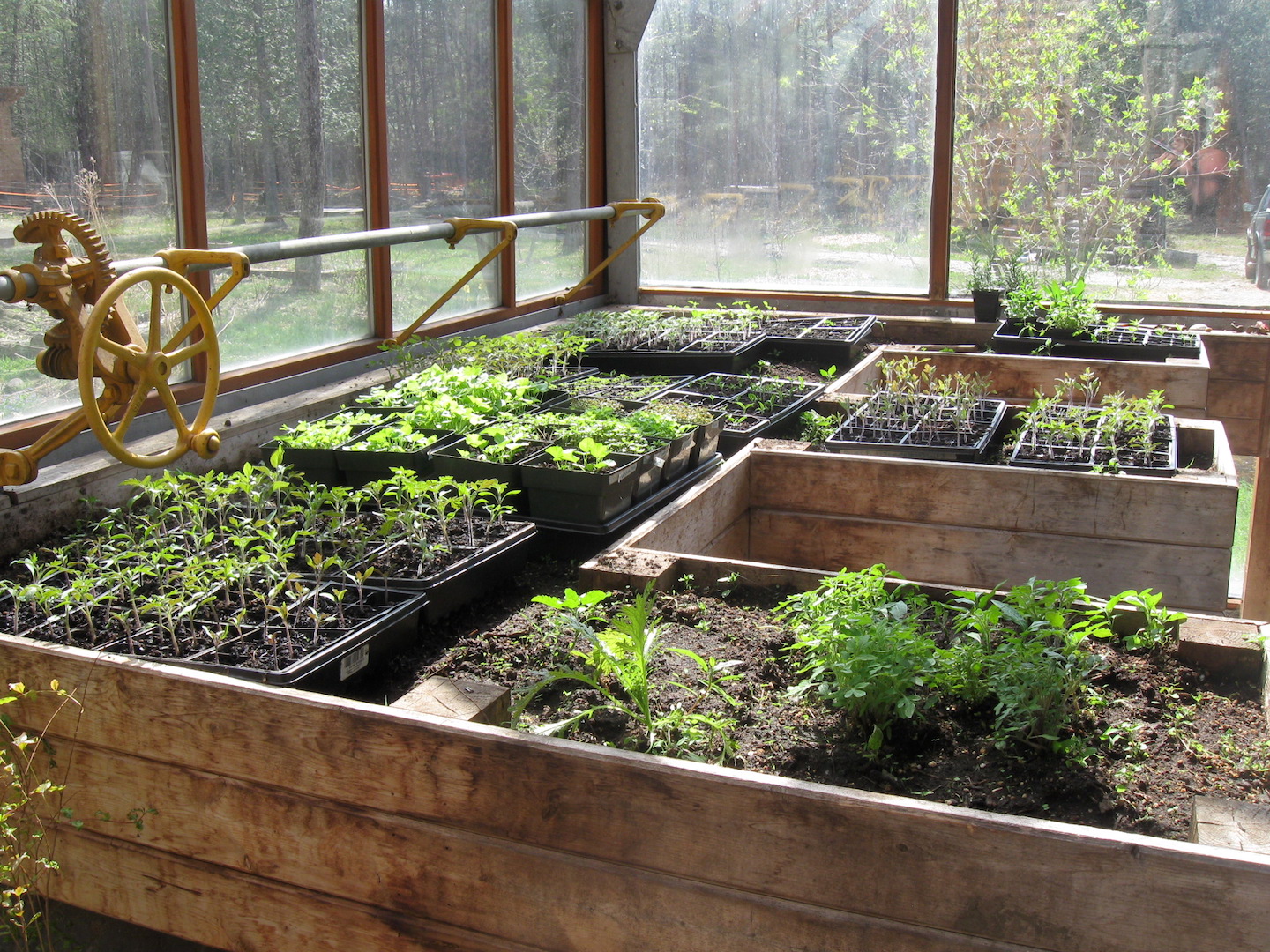
Greenhouse Flooring: Paved vs. Dirt
While the idea of planting directly into soil inside the greenhouse sounds appealing, I’m glad we opted for a paved floor. With our basement directly behind the greenhouse wall, we didn’t want to risk excessive moisture disrupting the freeze-thaw cycle or causing water damage.
Having a solid floor makes the greenhouse feel like part of the living space, rather than just an outdoor structure.
Drainage and Moisture Management
Drainage is key in any greenhouse, whether it has a dirt or paved floor. Ours has a built-in drain that runs from one corner of the greenhouse, sending water about 100 feet away into a runoff ditch.
Even though it’s an enclosed space, treat the side of your house inside the greenhouse as if it were exterior siding. Moisture and humidity build quickly, so proper flashing, vapor barriers, and weatherproof finishes are essential. We used a rubberized flashing system that slips under the cedar siding and diverts water down and away from the house to prevent infiltration at the attachment point.
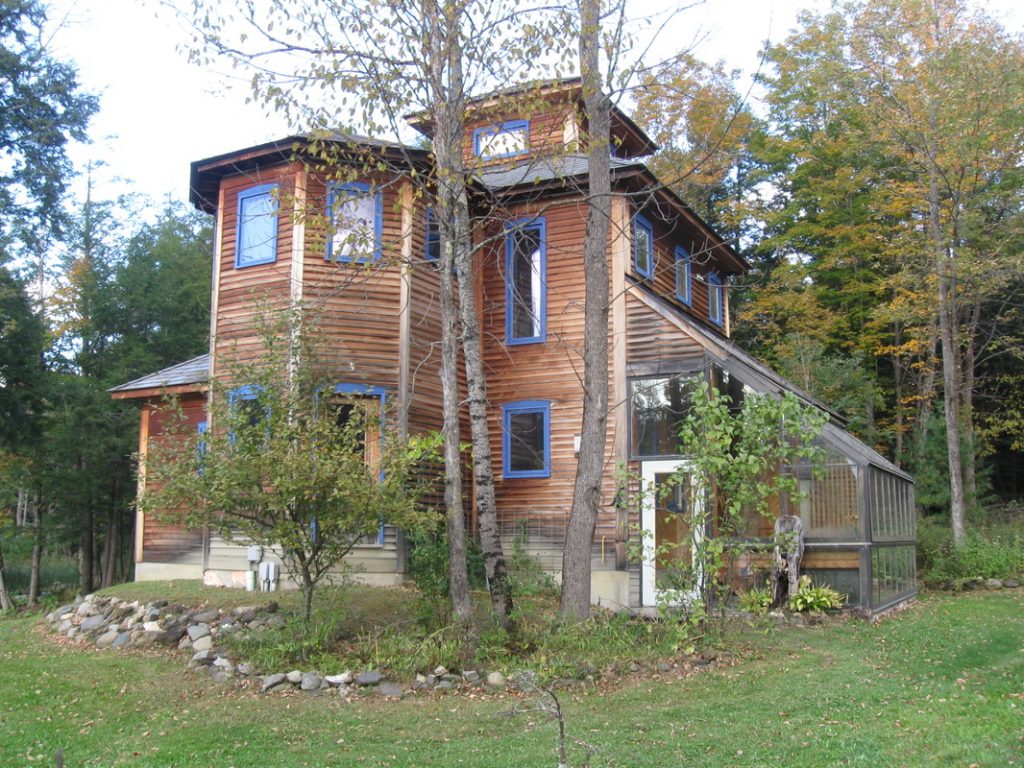
Snow Load and Roof Angles
With a steeply sloped roof, snow load hasn’t been a major issue for us. After a snowstorm, we simply sweep the glass with a push broom to expose it to sunlight, which melts the rest. This also keeps our attached solar panels clear and functioning quickly after a storm.
We did install an icebreaker bar on the roof above the greenhouse to prevent falling ice from damaging the structure. So far, we haven’t had any broken panels, but when ice crashes down, it’s loud—and a little nerve-wracking.
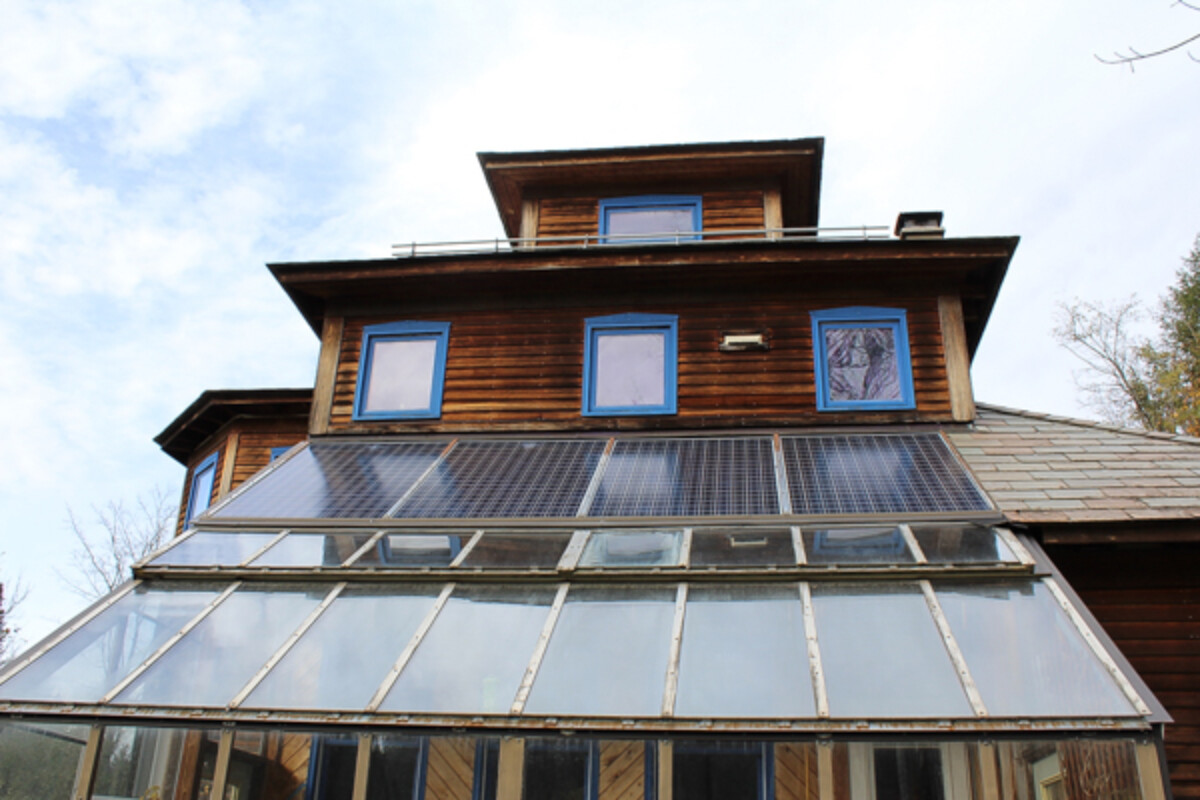
Solar Panels and Seasonal Shade
Mounting solar panels on top of our greenhouse has been a huge win. In winter, the sun’s low angle lets sunlight hit the greenhouse directly, maximizing passive heat gain. In summer, when the sun is higher in the sky, the solar panels provide shade—reducing overheating and keeping the house cooler.
The greenhouse environment also helps the panels melt out quickly after snowstorms, unlike our roof-mounted panels that often remain snow-covered and inactive for weeks.
(Here’s a tour of our off grid system if you’re curious).
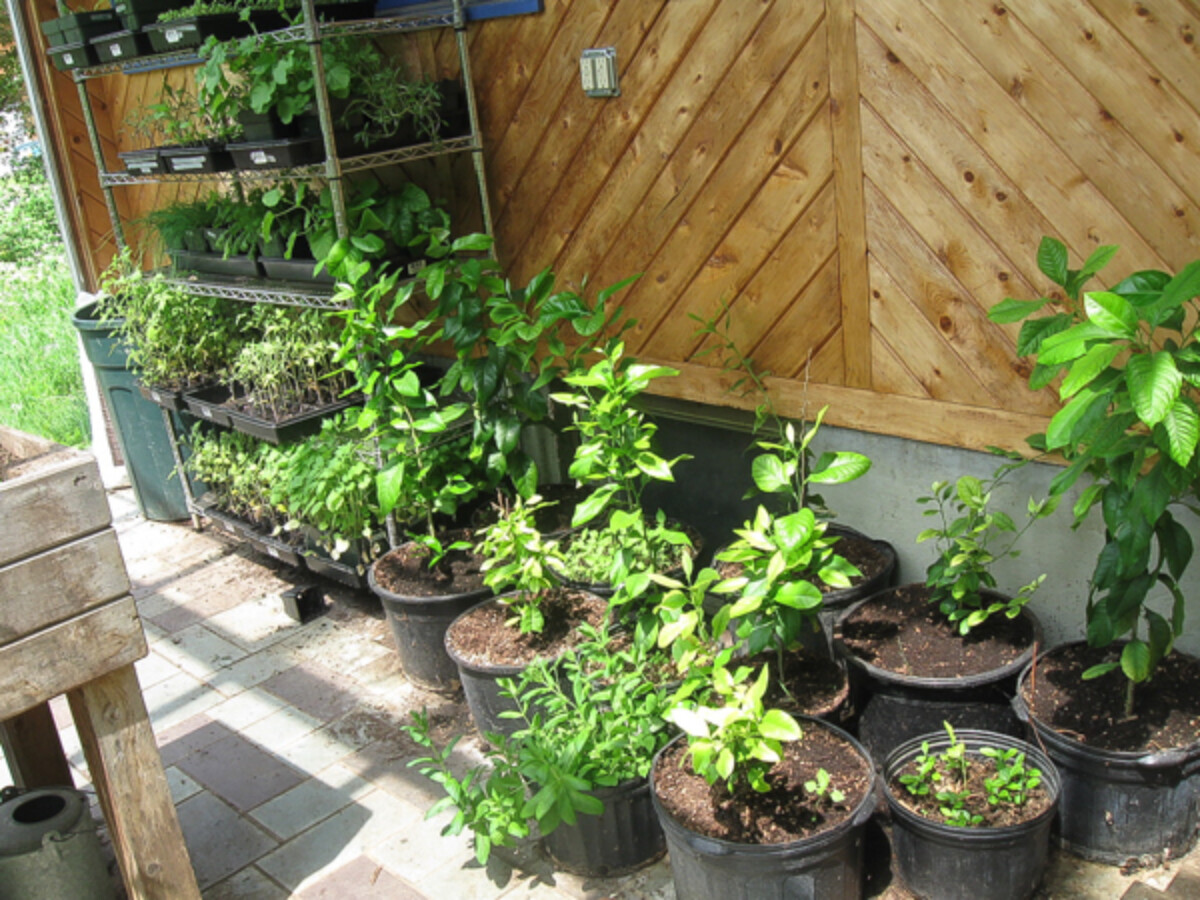
Managing Summer Heat in an Attached Greenhouse
Greenhouses are designed to trap heat, which is a blessing in winter but a potential problem in summer. Our setup includes manual ventilation, with full-length vents on both the roof and lower wall operated by antique crank systems. We also leave the doors open all summer to ensure airflow.
Manual venting is a good off-grid solution since it doesn’t rely on electricity, but it does mean you need to plan ahead. If the sun comes out and you’re not home to vent it, temperatures inside can spike fast. If we ever upgrade, an automated venting system with a temperature sensor would be our first addition—though we’d still keep the manual cranks as a backup.
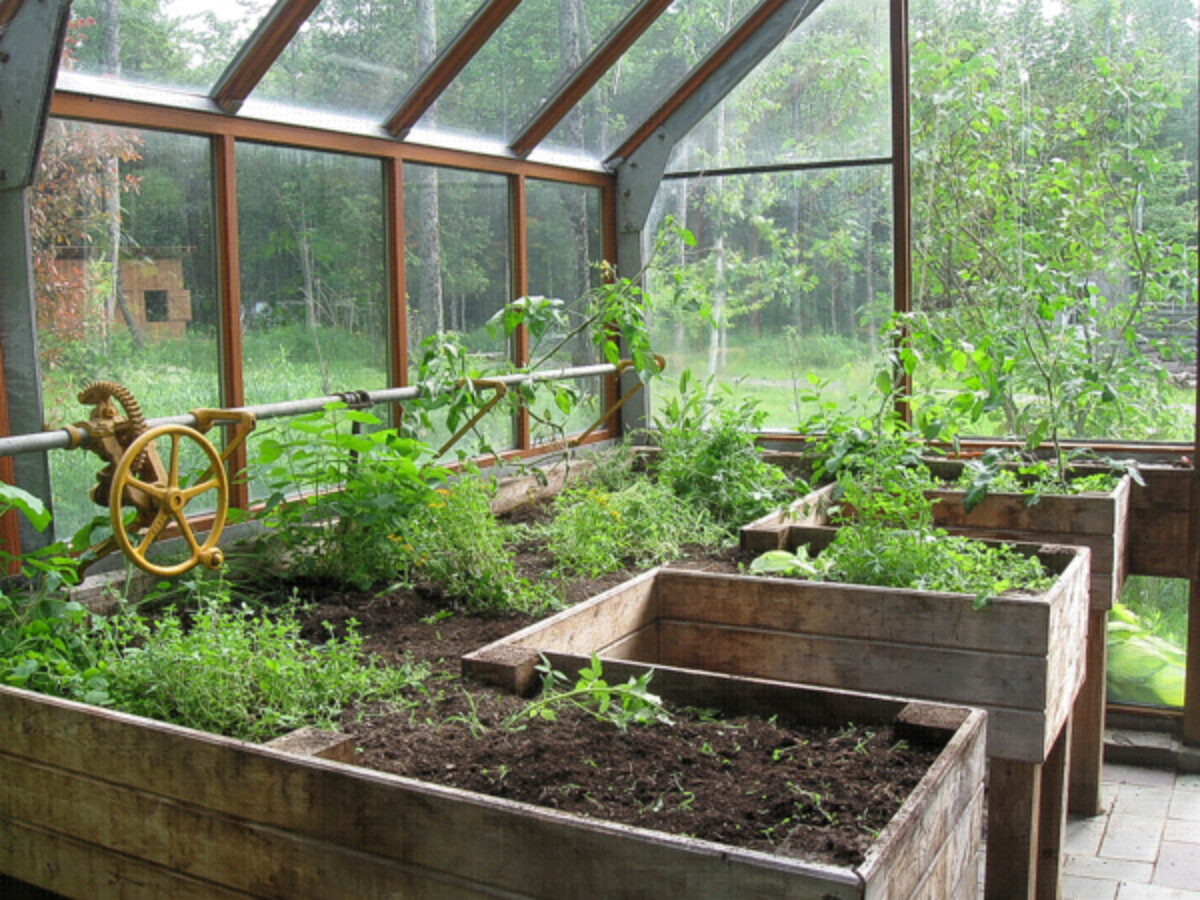
Greenhouse Pest Pressure
One downside of consistent warmth is consistent pest pressure. In our early years, we grew hardy winter greens like arugula and claytonia all winter long. It worked beautifully—until spring. As soon as temps started to rise, aphids exploded and devastated the greens, despite our best efforts with organic controls.
These days, we only grow herbs year-round inside the greenhouse. Rosemary, oregano, tulsi, and thyme thrive and resist pests naturally.
In addition to plant pests, we also struggle with wasps. The warm, dry eaves are ideal for nest building, and they’re relentless. We hang non-toxic sight lure wasp traps and change them monthly during warm weather—they’re absolutely full of wasps by the end of the month.
We’ve learned the hard way to keep the windows between the greenhouse and house tightly screened. Without good screens, you’re inviting pests directly into your home, and greenhouse pest pressure can be even higher than in the open outdoors.
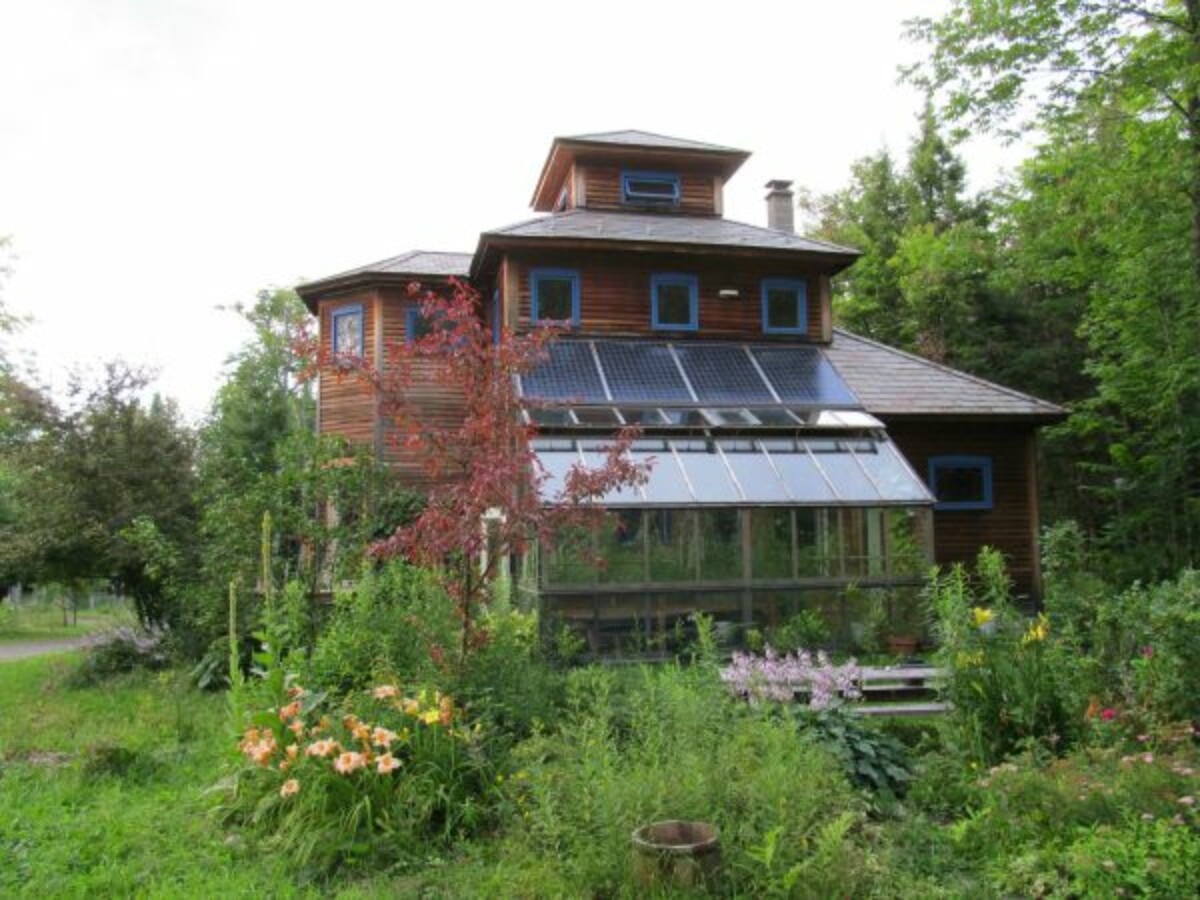
Our attached greenhouse has become one of the most-used and most-loved parts of our off-grid homestead. It helps heat the house, extends our growing season, and gives us a cozy place to enjoy the sun—even when it’s bitterly cold outside.
That said, it’s not without its quirks. It’s not ideal for seed starting in February, and pest pressure is a real challenge. But with thoughtful design and realistic expectations, an attached greenhouse can offer huge benefits for both your home and your garden.
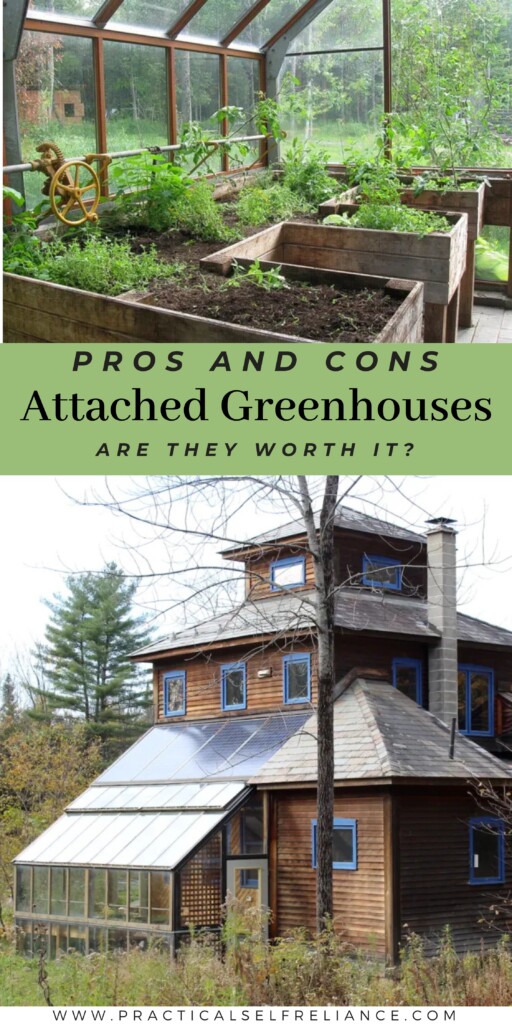














Excellent and informative. Thank you. As we look at attached greenhouse options this was valuable.
So glad it was helpful to you!
Thank you so much for your information about an attached greenhouse. Contemplating the best avenue for our house.
You’re very welcome.
This Vermont Mama is so thankful for your posts! Every time I stumble on one on Pinterest I’m like ooh another great relevant blog, then I realize its you. If you ever want a friend or two from southern Vermont to connect with, I’m here for it! We clearly think alike. I appreciate your a few steps ahead of my skill and knowledge level at all times too. Thanks for sharing so I can prevent some possible pit falls! I have been dreaming of an indoor greenhouse like this and never thought of some of the things you mentioned that are easiest to learn by experience.
I’m in Southwest Washington state and my best option of my needs is a north side sunroom. I can see that most of it is shaded in the winter but I have detached heated sunrooms for plants. This room will be for extra space and pet area. I intend to lay a 4′ cement slab and knee height brick as well as a brick fireplace (they did explain I needed to make sure the heat from the fireplace will be a good distance from the glass) and 3 drains since it’s long and I want to put a spa in there as well. I know in my regular greenhouse (I keep duck and geese) I have pests but only the ones they can’t reach… Do you think I’ll be facing pest problems in the one I’m considering building on the northside? Or are there other problems with building on the northside???
The biggest issue will be the lack of sunlight in that space which will keep it very cool. If it’s on a concrete slab, I don’t imagine that the pests will be much of an issue but it depends on how well everything is sealed up.
Thanks Ashley for the great pro/cons blog. I’m over in NH, and debating an attached greenhouse to our shed, which isn’t really the same as one cozied up to a nice warm house. I’m debating the foundation though, and thinking about erring on the side of insulation (like a mini house with lots of windows) vs. a true passive solar due to temps in the winter.
Do you know if your greenhouse foundation was built below the frost line at all?
Thanks!
Jeff
Ours was built below the frost line (at least in theory), and insulated with blue board all around below the soil, but we’ve had problems with some minor heaving anyway. Clearly, it isn’t quite deep enough…
Hi would you please share the dimensions of your greenhouse?
Thanks in advance!
Great website! Planning to make an attached, south facing greenhouse with all the bells and whistles however I have a few concerns.
First the heat in the winter months, warming up the house since it is attached to the greenhouse. I am not sure how much a good, automated ventilation system would help. Oh, and I am in South Australia, summer quite sunny and hot.
The other issue is that my location is elevated, my living room door which would be the access to the green house is about a meter high from the ground. I currently have an old timber deck there which is not being used. So, I was thinking to make the floor of the greenhouse elevated in level with the door (as the timber deck is now) however I was thinking to keep the timber planks with gap in between. This would help with the air circulation/venting I guess however I am a bit afraid of pests. What do you think?
I definitely think that the gaps would encourage pests even more which can already be an issue and it would be difficult to control the ventilation.
Love your site! I am also planning to put an attached greenhouse on our future home in western MA. Hard to tell from the photos, is yours all glass or are there any solid/insulated parts of it (such as a knee wall on the south side or parts of the east/west walls)? Can’t wait to have my own winter refuge!
Mine is glass all the way down to the floor on the south side.
I am considering a freestanding greenhouse, as I am battling birds, vole, moles, rats, etc.
HoweverI am concerned with pollination or lack of….
I grow tomatoes, zuccini, yellow crookneck squash.
some melons.
have not decided what else to grow in green house.
I easily grow herbs out doors now.
I was hoping a greenhouse would solve all problems… not
create new ones (pests)
thanks for your article. I did not realize heat would be such a problem to control.
I would build screened, maual opening vents, but did not think temp would require contant monitoring 🙁
even to require an temperature sensor operated vent or fan?
Something I would add here for everyone’s knowledge is heat operated controllers for venting. They use a wax filled piston and leverage, so some design considerations are needed. My most pondered concern would be depending on your greenhouse height, where exactly to place it/them so you don’t accidentally over-ventilate when you actually want to trap that heat. Also, a cold sink can possibly help too.
IT’s beautiful! Did you build it yourself or have it built? DO you have the plans?We’re gong to be moving and I’ve had a sunroom here; I’ll need to have one on the new place.
Yours is LOVELY!
Thank you! I am considering the same thing myself, but making it part of a tiny home that I am designing. Is moisture an issue at all? If so, how do you deal with it? I am experimenting with hydroponics now and hope by doing so, I can avoid some or all of the pest issues you mentioned.
We haven’t had moisture issues, but there’s a good vapor barrier and cedar shiplap siding all along where the greenhouse attachest to the side of the house.
What an informative article, Thank you ! PS – would love to see the interior layout of your beautiful home.
It’d be pretty simple. Downstairs is all one room, then a half loft over it for the 2nd story, with a ladder up to a small turret at the top.
I have had nearly identical experiences in my sunroom right down to the ahpids! I live in northern Washington and mainly use our sunroom for home heating. Nice idea using solar panels for shade.
Look for automated greenhouse vents powered with wax or oil that expands at it heats – they will open and close windows and doors anytime it gets too hot in there. As for wasps – blow air into a brown paper bag and hang it up inside the greenhouse. Wasps see it and think that other wasps have built a nest in there, which will keep most of them out. Thanks for a great blog 🙂
Great blog. If you ever get a free moment check out an arduino tutorial on youtube. It’s a bit daunting at first but you can learn to make automated controls for anything for just a few dollars.
Thanks for a great blog post. This is so helpful! Very well done and exactly what I wanted to know.
I am thinking off an attached greenhouse in VT, so this is super helpful! Is you floor just pavers, or are they over slab?
It’s over slab because it was put in at the same time as the house foundation, so it’s attached to the wall of our full basement. They did a lot of pre-work around the outside, and there’s foam board and god knows what buried all around to help guard against frost heaves. (I know because I tried to plant a strip of short herbs right in front of the glass, and there’s foam board under the grass there.
I’m also wondering if your greenhouse is south-facing. I’ve been thinking of putting a greenhouse on the south side of our house in Northern VT, and wondering if you are able to leave your plants in the greenhouse (thinking citrus, hibiscus, etc.) through the winter.
Ours is south facing, but we actually lost our citrus trees in a particularly cold snap leaving them out there. It’s single pane glass, and the top and doors don’t seal as well as they should. In a well sealed, double paned greenhouse you’d likely have better luck. During the coldest periods we now bring the citrus trees in, but we were able to overwinter rosemary bush out there for 3 years.
I’ve reread this a few times, so I apologize if I did actually miss this, but what orientation is the sunroom? Does it face South?
Also, you mention having your lemon tree in there in May. Do you bring it inside during the winter, or can it manage overnight? I ask because I’m from CA but moving to New England next year (my husband is from there….) and I’m trying to figure out how I can continue to have my Meyer Lemons!
Hi, this was a great article, I’m in NH and hoping to build a new barn with a greenhouse attached. Did you build yours yourselves? Where did you get your material or was it a kit?
Ruthylep@gmail.com